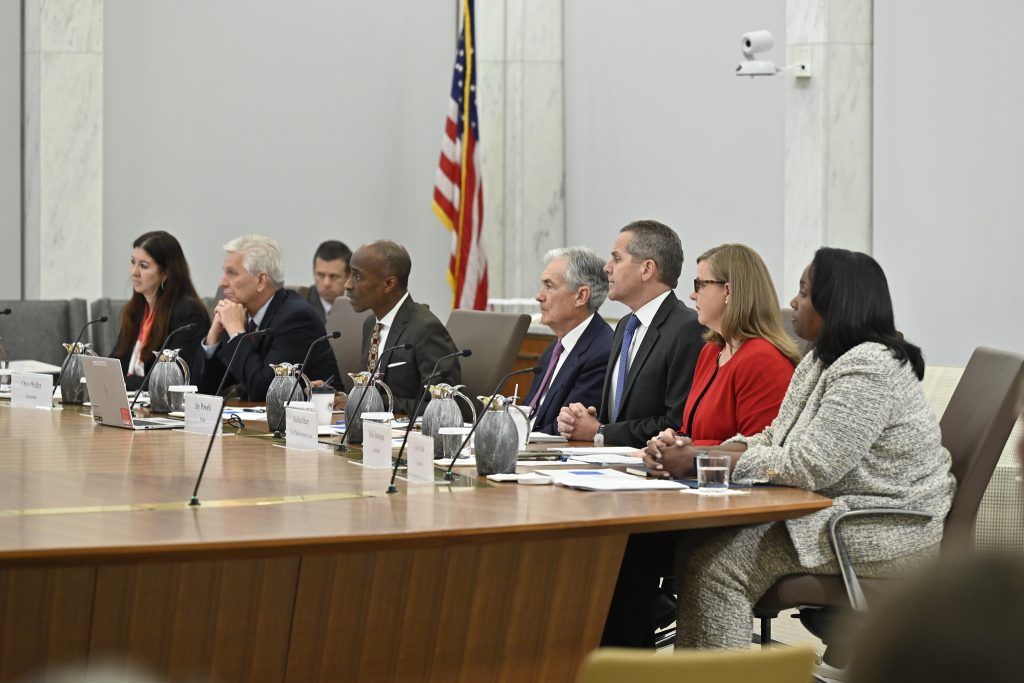The Federal Reserve’s recent Federal Open Market Committee (FOMC) statement has left markets and analysts alike scrambling to decipher what the central bank didn’t say. While the language in the statement often provides clear signals about the future trajectory of monetary policy, it’s just as critical to pay attention to what is omitted. Subtle shifts in tone, phrasing, and the emphasis on certain economic conditions or risks reveal a lot about the Fed’s thinking, even if it doesn’t directly communicate its next move.
In this analysis, we will dissect the latest FOMC statement, focusing on the nuances of the language, the potential market reactions, and how these signals fit into the broader economic backdrop.
The FOMC Statement: What Was Said
To understand what the Federal Reserve did or did not express, it’s essential to look at the key aspects of their statement. The FOMC frequently assesses and communicates its stance on several key economic factors:
- Inflation: The central bank’s primary focus is on price stability. In the latest statement, the Fed acknowledged that inflation remains above its target range of 2%. However, it also pointed out that inflationary pressures have shown signs of moderation, especially in certain sectors like energy and housing.
- Labor Market: The Fed continues to note the strength of the labor market, highlighting that unemployment remains near historically low levels. Wage growth, though moderated, remains an important factor in overall inflation trends.
- Growth and Output: Economic growth was mentioned, with the Fed noting that while growth has slowed, it is still somewhat resilient. The economy is not in a recession, but there are concerns about long-term sustainability given the higher interest rate environment.
- Global Economic Conditions: Geopolitical risks, such as ongoing tensions with China and Europe, were given some attention. While not as emphatic as domestic issues, these international factors were acknowledged as having potential impacts on the U.S. economy.
- Future Policy Stance: Here lies the most subtle part of the FOMC’s statement. The central bank generally hints at its future actions on rate hikes or cuts, often signaling whether it sees the need for more tightening or a shift toward a more dovish stance.
While these points seem straightforward, the real intrigue comes from the things that weren’t overtly stated. Let’s dive into these omissions and analyze the potential implications.
What the Fed Didn’t Say: Analyzing the Gaps
1. No Clear Guidance on Rate Hikes or Cuts
The most notable absence in the recent FOMC statement was any clear guidance on future interest rate hikes or cuts. Typically, the Fed’s statement provides some hint as to whether they foresee the need to raise rates further, pause, or even potentially cut rates. In the most recent statement, the language was noticeably vague.
The Fed did not specify whether they were leaning toward tightening further or holding rates steady. This omission leaves markets in suspense. Without clear forward guidance, the markets are left to speculate on whether the Fed will continue its hawkish stance or shift towards a more dovish approach in response to economic conditions.
This ambiguity suggests the Fed is in a data-dependent mode. Instead of making bold promises, it seems they are adopting a “wait and see” approach, waiting for more data on inflation and economic growth before deciding on further action.
2. Fewer Mentions of Financial Stability Risks
The FOMC statement notably downplayed any mention of financial stability risks that were highlighted in previous statements. In the past, concerns over the health of the banking sector and asset bubbles were more explicit in Fed commentary. Yet, the most recent statement did not emphasize such risks.
This could be interpreted as the Fed feeling more confident about the resilience of the financial system post-2023 banking turmoil. However, it could also be a subtle acknowledgment that financial instability risks remain but do not warrant immediate action. The omission could signal that the Fed believes the banking system and broader financial markets have regained stability following the initial shock from the collapse of certain regional banks last year.
3. Lack of Discussion on Wage Growth and Inflation Expectations
Wage growth was mentioned, but the Fed made no substantial remarks on its broader outlook for wage inflation or consumer inflation expectations, a topic that often plays a pivotal role in shaping monetary policy. In past statements, the Fed has frequently tied wage growth to its inflation outlook, but the recent statement was largely silent on this front.
The omission of any strong commentary about wage inflation could signal that the Fed views wage pressures as less of a threat than it did earlier in the tightening cycle. However, this could also be a deliberate strategy to avoid overstating concerns that could lead to unnecessary market volatility. In the current environment, where inflation seems to be moderating, the Fed may be trying to avoid triggering excessive concerns about rising wages leading to a wage-price spiral.
4. Global Economic Risks Downplayed
While global risks were mentioned, they were not discussed in the same detail as in previous statements. Given the ongoing uncertainty in global markets, particularly with geopolitical tensions and concerns over supply chain disruptions, the Fed’s relatively muted commentary on international risks is notable.
The absence of a more direct acknowledgment of these global concerns might reflect the Fed’s confidence in the resilience of the U.S. economy in the face of external challenges. However, it could also suggest that the central bank believes domestic factors like inflation and labor market conditions are the primary drivers of policy decisions, with global conditions being secondary considerations.

5. Inflation’s “Moderation” But Not “Victory”
While inflation was noted as having shown some signs of moderation, the statement stopped short of declaring victory over inflation. Previous statements were more aggressive in describing inflation as a primary challenge, but now the Fed is more cautious. The lack of a definitive statement about inflation having been “tamed” reflects the uncertainty surrounding the future trajectory of prices.
This cautious tone indicates that the Fed is not ready to declare the battle against inflation won, even as certain sectors (like energy) show signs of cooling. By not claiming victory, the Fed is signaling that it will remain vigilant about inflationary pressures, particularly in core areas like wages and rent, which tend to be stickier.
Market Reactions to the Fed’s Silence
The markets, predictably, reacted with a degree of confusion following the statement. Without clear direction, traders had to adjust their expectations based on past Fed behavior and the current economic landscape.
- Bond Markets: The bond market experienced volatility in the wake of the FOMC statement. With no clear signal about the future of rate hikes, bond yields initially spiked as traders speculated about the potential for further tightening. However, as the day wore on, yields began to fall, as investors re-assessed the Fed’s comments and concluded that the central bank’s stance might be more neutral than initially thought.
- Equities: Stock markets reacted in a mixed manner. Growth stocks, which tend to benefit from lower rates, were initially buoyed by the prospect of continued low rates, but later fell as the implications of prolonged uncertainty weighed on sentiment. Meanwhile, defensive sectors, such as utilities and consumer staples, saw a slight uptick as investors sought safety in stable earnings amid the market’s indecision.
- Dollar: The U.S. dollar experienced fluctuations as market participants adjusted their expectations for future Fed actions. The lack of guidance on interest rates led to a slight weakening of the dollar, as investors priced in the possibility of a prolonged period of rate stability, which could make the U.S. currency less attractive to foreign investors.
Decoding the Economic Backdrop
The broader economic backdrop plays a critical role in understanding the Fed’s language and its omissions. U.S. inflation remains above target but has been slowly moderating. The labor market is strong, but wage growth is showing signs of deceleration. Growth is slowing, but the economy has avoided a recession thus far, making it difficult for the Fed to take drastic actions in either direction.
The global economic landscape is also fraught with challenges. The geopolitical risks in Eastern Europe, rising tensions in Asia, and the lingering impacts of the pandemic continue to cloud the outlook. These global uncertainties likely contributed to the Fed’s reluctance to provide definitive guidance, as the central bank must navigate these external challenges while keeping domestic conditions in mind.
Conclusion: What It Means for Investors
The most recent FOMC statement highlights the Fed’s cautious approach in an environment of heightened uncertainty. By withholding clear direction on future rate hikes or cuts, the central bank signals a flexible and data-dependent stance, which has left markets with more questions than answers. Investors will need to stay agile, keeping an eye on upcoming economic data and the Fed’s next moves, while being mindful that the Fed’s silence on key issues like inflation and global risks suggests it is waiting for further clarity before making its next big decision.
This subtle approach from the Fed suggests that markets could remain volatile, and investors should prepare for an environment of ambiguity. Asset allocation strategies will need to be adaptable, with a focus on diversification and risk management.














































